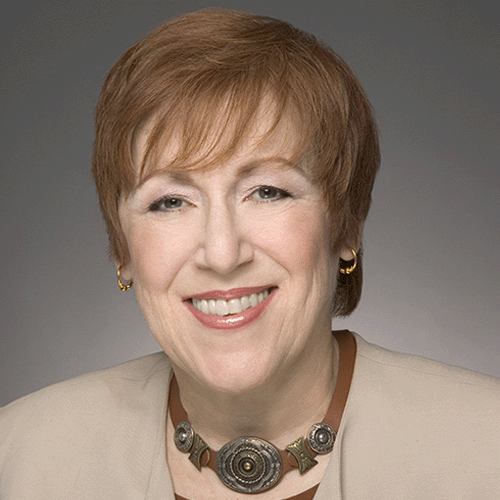By Harold Kerzner, Ph.D. & Judith W. Umlas
October 23, 2024
The Need for Project Kindness Practices
When was the last time you opened a project management textbook that included a section on demonstrating kindness during project management leadership? Have you heard speakers lecturing on project management discussing leadership kindness? The answer to both questions is most likely “no.” Fortunately, the discussion of kindness is now becoming common practice in project management education.
There have been numerous changes taking place in project and program management during the past decade, and perhaps the most significant change has been the emphasis on better project leadership practices. In the early years of project management, project leadership was based heavily upon exercising the authority needed to perhaps demand or force the team members to perform as needed. Concern for the team members was usually of little importance because the project manager had no responsibility for team member performance reviews and might never work with the same team members again.
Not all team members had a clear understanding of what was expected of them when they were assigned to a new project. The new project may have required the use of a new methodology that they have never used before. The project may require innovation and creativity, and the team members may have to work closely with people they had not worked with previously.
It is not uncommon for team members to fear the unknown. There could be significant anxiety and risks resulting in detriments to one’s career advancement opportunities especially if the team members will be removed from their comfort zones.
Growth of Workforce Leadership
Project leadership today emphasizes the principles of servant leadership and Grateful Leadership™ practices.
Kindness and Grateful Leadership, as developed by Judith W. Umlas, are deeply intertwined in their core purpose: both are centered on recognizing and uplifting others in a genuine, heartfelt way. Kindness involves intentional acts of compassion and care, creating a positive ripple effect in personal and professional relationships. Grateful Leadership, meanwhile, emphasizes the power of acknowledgment—expressing sincere gratitude for the contributions of others. When these two are “married,” they form a powerful approach to leadership that fosters trust, loyalty, and connection. Kindness sets the foundation for Grateful Leadership, making it more than a critical component of any leadership strategy; it becomes a lifestyle of valuing and uplifting those around you, enhancing individual and collective success.
Servant Leadership shares many of these qualities. “Like Judith W. Umlas, Robert Greenleaf (the founder of Servant Leadership) knew that you cannot build community, much less earn trust, without acknowledging colleagues, expressing gratitude and offering recognition. If Greenleaf was alive today, I believe he would say that you cannot be a servant leader without being a grateful leader.”
– Don M. Frick, Ph.D, Author of the authorized biography of Robert K. Greenleaf: A Life of Servant Leadership
Project managers are expected to demonstrate a positive attitude and goodwill toward all project individuals including team members, stakeholders, clients, and functional managers. Perhaps the most important words are “workplace kindness.” Project managers must learn to demonstrate workplace kindness the same way they may provide kindness at home.
Demonstrating kindness can boost worker morale, increase self-esteem, and trigger favorable emotions. The result can be a significant increase in efficiency, effectiveness, and productivity.
Project Leadership Kindness Techniques
Kindness should begin at the onset of the project or even before the project starts during workforce staffing activities. Engaging the project team effectively and making them feel comfortable about the assignment is a necessity. Projects today have longer durations than in the past. Demonstrating forms of kindness is essential over the complete life cycle of the project.
Ways of demonstrating project leadership kindness include:
- Engagement: The first step in demonstrating kindness begins during worker engagement at the start of a project. You must take the time to explain to each team member what they will be expected to do, how they might hopefully be rewarded for good performance and receive the appropriate recognition, and that it could have a favorable impact on their career goals and opportunities. Engagement also gives you the opportunity to explain what team members can expect from your leadership style.
- Active Listening: You must let people know that you care about what they will say during the project. Even if you disagree with them, or they are wrong in their opinion, it will not be held against them. Their opinion matters and is welcomed.
- Providing Feedback: You must make the team members understand that you will provide them with honest feedback regarding their concerns. They should view your responses to them as constructive feedback rather than criticism of their performance.
- Performance Recognition: Team members must understand that you will acknowledge their good performance, and it will be done quickly and publicly. This is a necessity to ensure that whoever performs the team member’s performance reviews, which may be their functional managers, is aware of their accomplishments. Recognizing the good work of team members could be the greatest form of kindness in a project.
- Empathy: Empathy is the understanding of the feelings of others. Telling team members that you will be empathetic to their concerns is a good start. But physically demonstrating empathy is best especially if problems occur and mistakes are made, and you demonstrate sympathy and forgiveness. Many forms of leadership kindness work best through demonstrations involving the act of kindness.
- Mentorship: Project team members are often removed from their functional areas for the duration of a project and may feel alone. This may create the fear of new challenges for them. As part of engagement practices, you must make team members aware that you are always willing to ask, “What can I do to help you?” By making them aware of your ability to act as their mentor and demonstrating mentorship, you have demonstrated your compassion for their best interests, and they usually respond favorably. Team members will believe that you will give them as much time as you can to assist them with their deadlines and issues.
Benefits of Project Workforce Kindness
Literature is now appearing that identifies not only the various ways to demonstrate kindness, but also the benefits that project organizations can expect. Some of the benefits applicable to project management include:
- Trust: Demonstrating kindness builds trust. Team members will then believe that it is in their best interest to support your leadership style.
- Loyalty: Kindness and trust can build loyalty and strong bonds between team members themselves and the project manager. Loyalty and trust can become contagious and spread to all the team members.
- Productivity: Kindness can significantly increase the energy levels of the team members. They then want to perform the best job possible. This will increase the productivity, efficiency, and effectiveness of the team and benefit the organization.
- Culture: In the past, project managers were allowed to establish a project culture unique to their project. The effective use of kindness allows companies to establish a corporate culture that benefits all projects. Kindness activities then become the drivers for designing a corporate culture.
Conclusions
There are other forms of project kindness that could be discussed such as having team meetings that include the delivery of pizzas or having the team meet after work for an occasional beer. But what is most important is that the growth in project interpersonal skill and project leadership styles are now including effective project leadership kindness practices. The benefits are certainly there and expected to grow.
Dr. Harold D. Kerzner, Ph.D., is Senior Executive Director at the International Institute for Learning, Inc., a global learning solutions company that conducts training for leading corporations throughout the world.
He is a globally recognized expert on project, program, and portfolio management, total quality management, and strategic planning. Dr. Kerzner is the author of bestselling books and texts, including the acclaimed Project Management: A Systems Approach to Planning, Scheduling, and Controlling, Thirteenth Edition. His latest book, Project Management Next Generation: The Pillars for Organizational Excellence, co-authored with Dr. Al Zeitoun and Dr. Ricardo Viana Vargas, delivers an expert discussion on project management implementation of all kinds.
Judith W. Umlas is Sr. Vice President, author and trainer at International Institute for Learning, Inc. (IIL), a global corporate training company. She is the publisher of IIL Publishing, New York. She is also the author of the ground-breaking book, The Power of Acknowledgment ©2006, IIL Publishing, New York, which has been credited with changing workplaces and lives by making use of the 7 Principles of Acknowledgment she developed. Her book on Grateful Leadership, Using the Power of Acknowledgment to Engage All Your People and Achieve Superior Results was published by McGraw-Hill Professional in association with IIL in early 2013 and You’re Totally Awesome! The Power of Acknowledgment for Kids was published in late 2013 by IIL Publishing.
Judith delivers inspiring, motivational, and transformational keynote addresses on Grateful Leadership and The Power of Acknowledgment all over the world. She also leads webinars and teaches full day virtual and traditional courses to organizations such as Volvo, the U.S. Army, Prudential, JMP Engineering, the World Bank, Fannie Mae, IBM, AT&T, Google, Amway, CCL Industries, the New York Police Department, and many others. She has trained over 100,000 people through her leading edge, highly interactive and engaging courses, and keynotes – with outstanding and long-lasting results. She heads up the Center for Grateful Leadership, a division of IIL, whose members from around the world are committed to practicing and implementing the Grateful Leadership initiative in their organizations.




